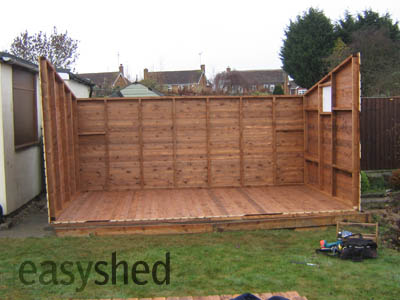

It can repel water quickly but is still shallow enough to repair any sort of wind or debris damage that might occur during a storm.įinally, consider the wind in your area. If you get lots of precipitation, then a standard mid-sized roof is best. They are easy to build and the cheapest option, but water can sit on top and seep into cracks between the roofing material. Shallow roofs don’t really like moisture. Live in Canada? Better raise that roof pitch a bit more to account for the buckets of snow you get every winter. Or is your climate more tropical? In this case, you’ll probably want a traditional 4:12 or so pitched roof. Live in the desert? A flat or low pitch roof might be just what you need. Convenience and interior space are great, but if everything in your interior is wet from leaks, then it doesn’t matter how nice your roof looks. There are tons of reasons to consider when building a shed roof, and the first has to take into consideration the safety of whatever is going to be in your shed. You’ll also give yourself tons of extra interior space to use for storage space or another workspace. Just be sure you have a way to repair the roof safely. Roofing material costs can add up in a hurry, and the difference in surface area, and roof framing, between a shallow and steep roof, is significant.īut don’t be fooled, a steep roof is an excellent defense against weather. The problem with a very steep roof is that if anything goes wrong, whether a leak or a missing shingle, then it is very difficult to reach and replace.Īs well, you will need much more roofing material on a roof pitch of over 9:12 than you would on a 3:12 roof.

You might ask yourself, why not just have the steepest roof possible? It would repel any type of weather with ease and snow buildup wouldn’t be an issue. Working on the roof more difficult than shallow roofs.Shed trusses are no different and pre-fab trusses of smaller dimensions are likely going to be in the neighborhood of 4:12. Store-bought trusses like these are often 4:12. Use a handy tool like snow load calculator to help you determine if your roof can handle the weight of snow-based on its pitch.Īlso, if you are using pre-fabricated trusses, then you won’t be able to decide the pitch of your roof. Again, the most important consideration is the weather. These are also the most common pitches for shed roofs. Shingles often not rated for shallow roofsĪny roof from 4:12 to 9:12 is considered an ordinary angle for a roof.Uses the least amount of roofing material.More commonly, roll on membranes such that use heat to bond seams together is used as a roofing material. Many roofing shingles do not allow applications onto roofs at this pitch. Low Pitched RoofsĪ low pitched roof is anything that is any roof with a pitch of 3:12 or less. It’s important to remember that roof pitch doesn’t necessarily have to refer to a gable roof – it can also be a lean-to, saltbox style or another type of roof with a flat surface. Have a look below to see the advantages and disadvantages of the various roof pitch types. Let’s take a closer look at the advantages and disadvantages of the different roof pitches. The surface area of the roof increases with steeper pitches, and you’ll have to budget accordingly when planning your shed roof construction. As well, the shallower the pitch, the more you’ll need to consider more moisture-resistant roofing materials and underlayment.Īnother issue is that the steeper the slope of the roof, the more roofing material you’ll need, from roof framing to sheathing. The slope of your roof is vital as a moisture barrier, among other things, and having a roof that is too flat can potentially cause your shed to cave in. Remember, roof pitch isn’t just for aesthetics. Roof pitch calculator is great for calculating the pitch of your shed roof. If you are following a plan for your shed construction, more often than not it will be listed as a ratio. However, rise over run is more efficient and easier to understand for the average DIYer. You can also divide the rise over run, multiply by 100 and get a percentage.

A 4:12 pitch is around 18.5 degrees, but not exactly. So, if your roof rises 4 inches for every 12 inches of horizontal length, then the pitch of your roof is expressed as 4:12.Ī ratio is the most common way of expressing roof pitch or roof slope, but degrees are also possible. The way pitch, also known as roof slope, is measured is rise over run. Roof pitch is the measurement of roof steepness. Using 48” Carpenters Level and Measuring Tape.
#Building shed roofs how to#


 0 kommentar(er)
0 kommentar(er)
